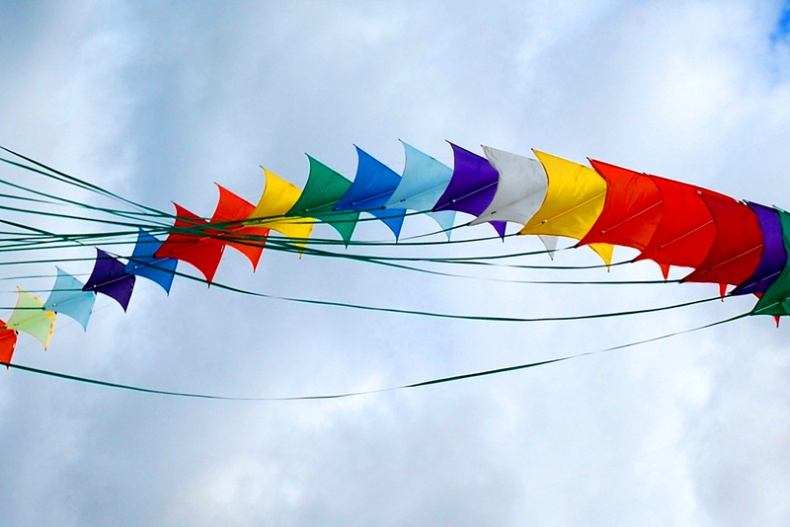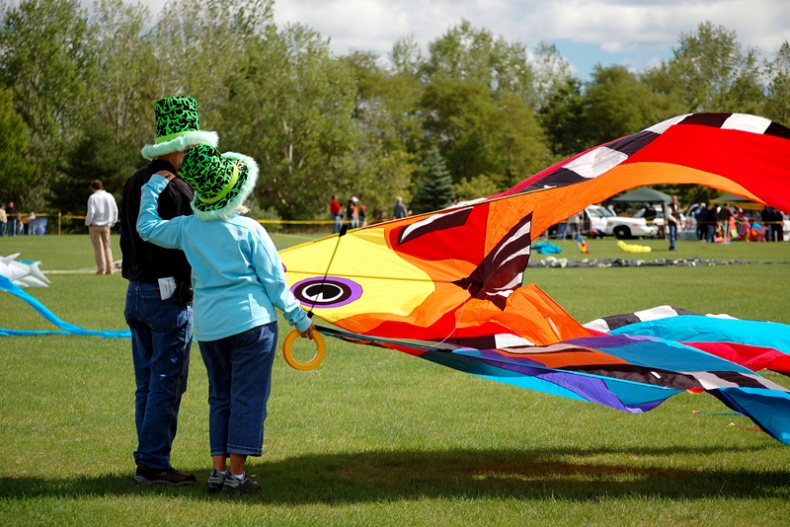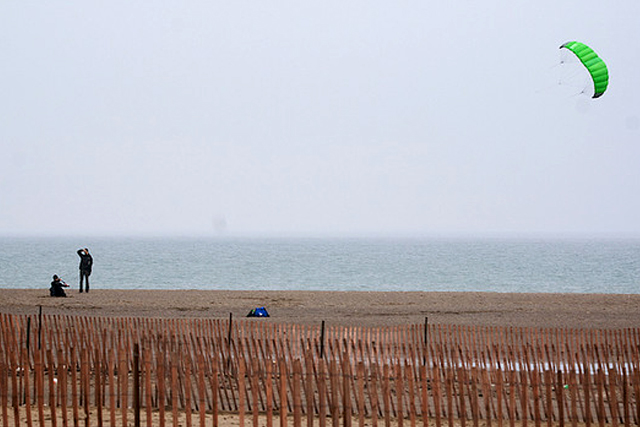
Colourful Kites
by John Vetterli
Flying a kite is a great and easy outdoor activity for the whole family. All you need is a kite, a little practice, and a mild breeze and you can launch your kite to the sky. Kite flying has become very popular recently and parks are full of kiting enthusiasts who use their kites not only for flying but also for various different activities and stunts. Such activities are often potentially dangerous and therefore there are numerous restrictions regulating kite flying in Toronto.
Kite Flying Restrictions in Torontonian Parks
It's very unfortunate for all Torontonian kite flying enthusiasts that the City of Toronto banned kite flying in Milliken Park. Local residents complained about kite fighting where special strong types of strings made from fishing lines, metal wire, or glass-coated flying lines are used. These strings are often left after the battle lying in the park as garbage, thus threatening kids, small animals, or city workers using maintenance equipment. There have been many complaints about sharp strings causing animal and human injuries.
Chin Lee, councillor of Ward 41, wrote in a news release, "I've heard reports of people getting tangled in the string and falling and of people being cut in the face by string that has become snagged in a tree." According to Lee, enforcing the ban only on kite fighting wouldn't be practical and therefore the city has decided to prohibit kite flying in Milliken Park generally. This ban, however, doesn't apply to other Toronto parks.
Kite flying safety is a very noticeable issue in Toronto. Torontonian bylaws ban kite flying within 25 metres of a tree, a building, or an electricity pole. Moreover, the Parks and Environment Committee recommended three points:
- City Council should prohibit kites with strings made out of hazardous materials in City parks.
- City Council should authorize competitive kite flying activities through the Parks, Forestry and Recreation permit process.
- City Council should ban competitive kite flying in parks that have significant bird activity.

Enjoy Kite by John Vetterli
Nevertheless, kite flying is a relaxing, family-friendly activity perfect for a sunny day when a mild breezes blow. If you and your family want to fully enjoy kite flying, don't forget to take reasonable care, use safe materials, and be considerate to others. Kites should be flown in open areas — never near power lines, cars, airports, trees, buildings, or other people. Never fly a kite if a storm is approaching, and wear gloves if you want to avoid cuts or burns from the kite lines.
Many people often wonder how it's possible that kites of different shapes, sizes, and types are able to stay suspended in the sky. The origins of kite flying dates 2,500 years back to China and Indonesia. Since then, kiting has changed in many ways. Contemporary kites use modern materials and technologies, and flying them is often a piece of cake. There's an abundance of different varieties of kites, ranging from smaller than a postage stamp to giant kites with hundreds of square feet of surface area.
Choosing a Kite
The first thing you should take into consideration when buying a kite is the material it's made of. Some materials are more durable, water-resistant, and generally better for flying. For example, paper sails are cheap but fragile, whereas sails made from ripstop nylon or ripstop polyester endure much better. On the other hand, kites made from lighter materials usually fly better than the heavier ones. Another important aspect of every kite is its size. Larger kites need a stronger kite line, but they usually fly the best. The shape and design of the kite is in most cases the most appealing and interesting thing on your kite, but remember that your kite has to be balanced and able to withstand stronger wind. Sometimes, it might be useful to add a tail to your kite, improving its balance and also creating an elegant look.
Choosing a kite also means selecting a suitable line. Stronger lines are generally better for flying kites, but remember: kites with strings made out of hazardous materials are extremely dangerous and therefore shouldn't be used. The Torontonian Parks and Environment Committee recommended that City Council prohibit kites with strings made out of hazardous materials in Toronto City parks. However, these kinds of strings are used mainly during competitive kite flying. If you just want to take your kids and fly a kite, you probably won't need a metal or fishing line string.
Wind

Go Fly a Kite
by Josh Tidsbury
The best wind for flying kites is between 10 and 40 kilometres per hour. Still, there are kites that are designed for lower or higher winds; therefore, you should find out as much information as possible about your kite. The speed of wind usually varies with altitudes – the higher the altitude, the stronger the wind.
Remember: strong winds do not provide ideal conditions for kite flying. The speed and direction of wind varies, as it flows in waves, therefore it depends also on your location whether you'll have enough wind to launch your kite. Ground obstructions block and decrease the speed of the wind, so you should always try to find a huge, flat area without any obstructions.
Furthermore, it's crucial to determine the wind direction to successfully launch your kite and evade any turbulence or other annoyances. It's easy to determine the wind direction if there are other people flying kites, or you can look for some flags, banners, etc. Other methods are probably more demanding: sometimes you can feel and hear the wind when you turn your face towards the wind; you can watch grass moving; or throw a few pieces of sand into the air and watch the direction of their flow.
WindFest
Even though there's a relatively high number of kite flying regulations, this hobby is still very popular in Toronto. Every September, expert kite flyers from across North America gather at Toronto's Waterfront to demonstrate their amazing skills and beautiful kites. There are also several Toronto kite flying groups that regularly attend the festival, such as Toronto Kite Flyers or Gogi Kite Club. WindFest offers enough space for everyone who wants to enjoy safe kite flying. Moreover, there are many interesting workshops on how to make kites, how to fly them, and more. WindFest also promotes multiculturalism and sustainable development. Here is a short video from WindFest 2011:



